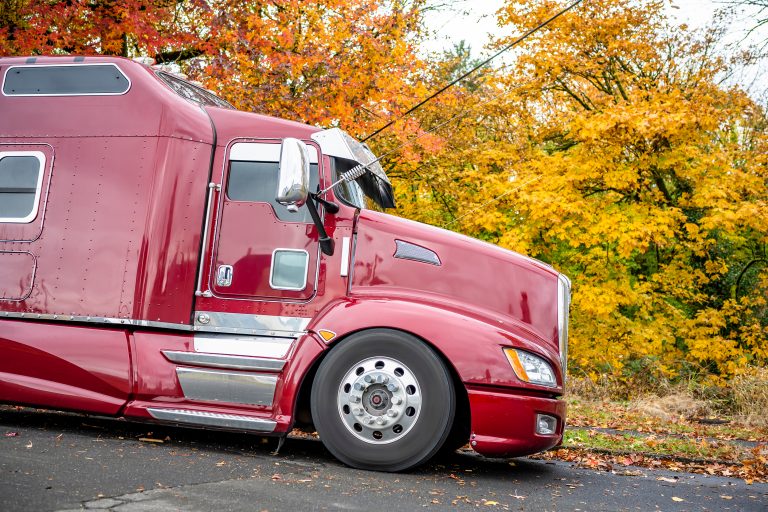The ELD mandate has changed how truckers track hours of service. While the transition from paper logs to electronic systems promised greater efficiency and compliance, the reality has been mixed for many truckers. Nearly every driver on the road today has experience with ELDs, but that experience hasn’t always been positive.
If you’re thinking about switching to a better ELD provider, you’re not alone. The market offers a variety of solutions with different features and capabilities. This guide will help you recognize when it’s time to make a change, what features matter most, and how to switch to paperless logs trucking professionals can count on for efficiency.
The Evolution of Paperless Logs in Trucking
The trucking industry has come a long way since December 2017, when the ELD mandate took effect. Those early days were challenging – many truckers had to rush into compliance, often choosing whatever system seemed most accessible. Fortunately, the ELD technology landscape offers a range of options.
Today’s devices offer different user experiences, connectivity options, and interface designs, with truckers finding that some systems align better with their specific workflows than others. Many include features beyond basic compliance, such as fuel tax reporting and maintenance tracking.
Driver expectations have evolved too. While early adopters might have been satisfied with basic compliance, today’s users want reliability, ease of use, and responsive support. The market has also changed, with many early providers disappearing while stronger companies have emerged by listening to driver feedback and improving their products.
For truckers who adopted paperless log books early, revisiting available options can be worthwhile. Many are finding that problems they’ve accepted as “normal” can actually be solved by a better system.
Do you have any questions? Talk to ELD Advisor: 650-405-3372 or Request Callback
Signs It’s Time to Switch Your ELD Provider
Many truckers continue using unreliable ELDs simply because they’ve gotten used to the problems. Recognizing when it’s time for a change can save you hours of frustration and help avoid compliance issues.
Technical problems are the most obvious warning signs. If your current ELD system shows several of these red flags, it’s time to consider alternatives:
- Frequent disconnections. Your ELD regularly loses connection with the engine, creating gaps in your logs that can trigger violations during inspections.
- Delayed data syncing. Your logs take hours to appear in the office system, creating confusion between what drivers see and what managers can access.
- Software crashes. The paperless log book system often freezes or behaves unpredictably, forcing drivers to waste time restarting devices during their workday.
- Hardware failures. The device overheats, has battery issues, or breaks down well before they should.
- Wrong location data. GPS tracking is frequently inaccurate, causing problems during roadside inspections.
Hidden costs are another common reason truckers seek alternatives. Watch for these pricing warning signs:
- Rising monthly fees. Your subscription costs keep increasing without any improvement in service or features.
- Surprise charges. You regularly find extra fees for basic features or “administrative” costs that weren’t clearly explained upfront.
- Expensive replacements. You pay full price for replacement devices when the original units fail early.
- Update fees. You’re charged extra for required compliance updates that should be included in your subscription.
- Harsh contract terms. You’re locked into a long-term agreement with heavy penalties despite ongoing service problems.
Customer service quality makes a significant difference in your ELD experience. Poor support often shows up as:
- Limited help hours. Support isn’t available when your trucks are actually running, leaving drivers stranded when problems happen.
- Uninformed representatives. Support staff don’t understand trucking operations or regulations well enough to solve your specific problems.
- Language barriers. Communication problems consistently make getting help difficult, extending downtime for your drivers.
- Unresolved issues. Reported problems are recorded but never actually fixed, forcing you to find workarounds.
- Repeated explanations. You have to call multiple times about the same issues, explaining the situation from scratch each time.
The day-to-day user experience ultimately determines whether your ELD helps or hurts your operation. Watch for these problems:
- Complicated menus. Drivers need too many steps or confusing navigation for basic functions that should be simple.
- Hard-to-read screens. The display is difficult to see in bright sunlight or at night, creating both safety and compliance risks.
- Difficult log editing. Making legitimate corrections is unnecessarily complicated, discouraging drivers from fixing errors.
- Confusing status changes. Drivers struggle with basic functions like changing duty status because of poor design.
- Lengthy training needs. Getting new drivers up to speed takes too much time, delaying their productivity.
If several of these issues sound familiar, it’s worth exploring alternatives. With today’s improved ELD options, these frustrations aren’t something you simply have to accept.

Essential Features in a Quality ELD System
When looking at replacement options, focus on features that will make a real difference in your daily operations. A good ELD should help you stay compliant without creating new problems.
Reliable compliance functionality forms the foundation of any good system. Key features to look for include:
- Automatic driving detection. The system accurately identifies when you’re driving without requiring you to touch the screen, reducing violation risks.
- Clear hours display. Remaining available hours are easy to see and understand at a glance when you need to make quick decisions.
- Simple status changes. You can update your status with just a few taps, letting you focus on driving instead of navigating complex menus.
- Early warnings. The system alerts you before you’re about to run out of hours, preventing accidental violations.
- Easy inspection mode. A simple roadside inspection screen makes showing your logs to officers straightforward and stress-free.
- Compliant log management. The system allows you to fix legitimate errors while maintaining the required compliance records.
- Quick certification. Daily log certification is straightforward with clear instructions that don’t leave you confused.
Hardware quality directly impacts your day-to-day experience. Look for these physical features:
- Tough construction. The device stands up to vibration, temperature changes, and other challenges common in trucks.
- Reliable connection. The link between the ELD and engine stays stable regardless of where you’re operating.
- Easy installation. You can install the device yourself in under 30 minutes without special tools or complicated wiring.
- Stable Bluetooth. Wireless connections work consistently without requiring constant re-pairing.
- Offline capability. The system continues working in areas with poor cell coverage, especially in rural locations.
- All-weather performance. Hardware works reliably in both extremely hot and cold conditions.
The user interface makes a big difference in driver satisfaction and efficient usage. Look for these usability features:
- Simple design. The system is easy to learn for drivers of all technical skill levels.
- Good visibility. Displays remain readable in bright sunlight and at night.
- Minimal distraction. The system requires minimal interaction while you’re driving.
- Language options. Multiple language choices accommodate diverse drivers.
- Works without service. You can update your status even in areas with no cell coverage.
- Quick vehicle switching. The process for changing between different trucks is straightforward.
- Clear notifications. System alerts inform you without dangerous distractions.
Management features provide necessary oversight for fleet managers and safety personnel:
- Simple dashboard. Fleet managers can quickly see compliance status across all vehicles from a single screen.
- Current information. Driver status and available hours update in real time for better load planning.
- Early alerts. The system notifies drivers about potential issues before they become violations.
- Efficient review tools. Administrators can easily check and manage logs when necessary.
- Appropriate access. Different permission levels for dispatchers, safety managers, and office staff protect sensitive data.
- Document storage. Supporting documentation is organized alongside HOS logs for complete compliance records.
When evaluating replacement systems, prioritize the features that address your specific challenges. The right system won’t just meet basic requirements – it will solve the particular problems you’re experiencing with your current provider.
Evaluating ELD Reliability and Performance
Reliability matters more than fancy features when choosing an ELD. Even the most advanced system provides little value if it fails when you need it most.
Connection stability and hardware durability are the foundation of dependable performance. Your ELD should stay connected with the engine, even in areas with interference. The physical device should withstand extreme temperatures, vibration, and humidity without degradation. Connectors should stay secure despite connections and disconnections, and the device should survive occasional drops without losing or damaging data.
Software update processes reveal much about a provider’s commitment to quality. Regular updates indicate active development and ongoing improvement, while infrequent updates suggest potential stagnation. Updates should install smoothly without requiring extensive downtime, and the provider should address regulatory changes well before deadlines. Ask potential providers about their development cycle and recent update history to gauge their commitment to continual improvement.
Data security and backup procedures protect your information and ensure compliance. Your logs should synchronize frequently enough to prevent significant loss if a device fails, and the provider should maintain redundant storage to protect against server issues. Both transmitted and stored data should be encrypted, with appropriate access controls to prevent unauthorized viewing while allowing legitimate use by authorized personnel.
Performance in areas with poor connectivity separates a reliable ELD from one that works only in ideal conditions. Your system should continue recording driving time and allow status changes even without cellular service, then automatically upload that information when connection is restored. Enough local storage should be available for long periods offline, and the system should prioritize critical functions when connectivity is limited.
Don’t just accept marketing claims about reliability. Speak with other truckers using the same systems. Take advantage of trial periods to test performance in your specific operations before committing. This hands-on experience provides far more useful information than promotional materials.
Remember that the true cost of an unreliable paperless logs for trucking includes not just the subscription fees, but also the operational impacts of downtime, the compliance risks of malfunctions, and the frustration caused to drivers. These hidden costs often far exceed the apparent savings of cheaper but less reliable systems.

HOS247 ELD: A Reliable Alternative
After experiencing problems with first-generation ELDs, many truckers are looking for better options. HOS247 has built a reputation as a quality solution designed by people who understand the real-world challenges of electronic logging.
HOS247 offers a complete system that goes beyond basic compliance. Key features include:
- Flexible rule options. Support for different HOS rule sets works for various operation types, including different carrier categories and exemptions.
- All-in-one solution. Beyond basic logging, the system includes GPS tracking, fuel tax reporting, and truck diagnostics without extra subscriptions.
- Works for any size fleet. The system is effective for both independent owner-operators and larger fleets with more complex needs.
- Two-click status updates. You can change your status with just two taps, minimizing time spent on the device.
- Simple inspections. A dedicated inspection screen makes roadside stops less stressful by clearly organizing your information.
- Built for trucking. Equipment is specifically designed for the harsh conditions in commercial vehicles.
- Consistent connection. Bluetooth stays connected without the frustrating re-pairing issues common in other systems.
- Works with all trucks. The system is compatible with most truck types, including older models.
- Quick self-installation. Drivers can install the device in under 10 minutes without special tools or help.
- Solid warranty. Defective devices are replaced free within the one-year warranty period, showing confidence in product quality.
- No long-term contracts. Month-to-month plans let you stay because you’re satisfied, not because you’re trapped.
- Multiple languages. Full support in English, Spanish, Russian, and Polish helps drivers from different backgrounds.
- User-friendly design. The interface works well for drivers with different technical experience levels.
- Seven-day support. Help is available when trucks are actually operating, including weekends and holidays.
- Callback promise. If a support call drops, our representatives will call you back to continue helping.
For truckers frustrated with their current ELD, HOS247 offers a quality alternative worth looking into. The two-week trial period lets you test the system to make sure the system is right for your business.
Switching ELD Providers
The decision to change providers is often easier than the transition itself. With careful planning, you can switch systems without disrupting your operations or compromising compliance.
Start by reviewing your current contract for termination clauses and potential penalties. Schedule the change during a relatively quiet period in your operations, and consider implementing it in phases if you operate multiple vehicles. Briefly running both systems in parallel can provide a safety net during the transition.
Maintaining complete records throughout the switch is essential for compliance. Download and securely store all logs from your current system before termination, as many providers cut off access immediately upon cancellation. Remember that you must maintain the previous six months of logs for roadside inspection, along with supporting documents. Address any unassigned driving time in your old system before decommissioning to avoid compliance gaps.

Even user-friendly ELDs require training for effective use. Develop a program covering both basic operations and troubleshooting for common issues. Provide materials in the languages your drivers use, and include practical scenarios like roadside inspections and malfunction procedures.
A typical transition takes 4-8 weeks depending on fleet size and complexity. The process usually follows these phases:
First, review contracts, order hardware, prepare training materials, and install test units in select vehicles. Next, conduct driver training, begin installing equipment across the fleet, and run parallel systems briefly. Then complete installations, finalize training, and fully transition to the new system while maintaining extra support availability. Finally, gather feedback, make any necessary adjustments, and confirm all vehicles are operating properly on the new system.
Pay special attention to compliance during the transition. Document any technical issues encountered, including troubleshooting steps taken. Have a paper logging backup procedure ready for technical problems, and ensure drivers know exactly when to stop using the old system and start using the new one. Prepare drivers to explain the transition to enforcement officers if stopped during the changeover period.
With proper planning and execution, switching ELD providers can be accomplished without violations or significant disruptions. The short-term effort of a carefully managed transition is far outweighed by the long-term benefits of a more reliable, user-friendly ELD solution.
Paperless Logging Systems Extra Features
The best truck paperless log book offers features beyond basic hours-of-service tracking. These additional features can change your electronic logging device from a compliance requirement into an asset.
IFTA reporting automation eliminates one of trucking’s most tedious administrative tasks:
- Automatic state mileage tracking. The system logs miles traveled in each state, eliminating the error-prone process of manual trip reconstruction from fuel receipts.
- Fuel purchase integration. Advanced systems connect with fuel data to automate the entire tax calculation process, reducing mistakes.
- Audit protection. The system keeps organized supporting records that provide protection during fuel tax audits.
- Border crossing documentation. Detailed records show exactly when vehicles crossed state lines, providing clear evidence for tax disputes.
GPS tracking improves fleet management and customer service:
- Real-time location monitoring. See your entire fleet on a single map for better dispatch coordination and resource planning.
- Trip history review. Look back at completed routes to verify deliveries, analyze efficiency, and answer customer questions accurately.
- Idle and speed monitoring. Track engine idle time and speeds to find ways to save fuel and reduce emissions.
- Better delivery estimates. Calculate more accurate arrival times based on actual truck location and traffic conditions.

Maintenance management features help prevent expensive breakdowns:
- Service reminders. Get automated alerts based on mileage, engine hours, or calendar dates to ensure critical maintenance isn’t forgotten.
- Early warning system. Identify engine fault codes immediately to fix issues before they cause roadside breakdowns.
- Complete service records. Keep a full maintenance history for each truck to support compliance requirements and resale value.
- Performance monitoring. Track metrics like fuel economy to spot potential mechanical problems before they become serious.
- Inspection integration. Connect driver vehicle inspection reports directly to maintenance scheduling for faster repairs.
Fuel efficiency tools help control one of your biggest operating expenses:
- Driving behavior insights. Identify patterns like hard braking and excessive idling that waste fuel and increase maintenance costs.
- Smarter routing. Analyze completed trips to find more efficient routes that reduce unnecessary miles on future runs.
- Speed management. Monitor and address excessive speeds that significantly increase fuel consumption and safety risks.
- Idle reduction. Track and minimize unnecessary engine idle time through driver coaching and alerts.
- Vehicle comparisons. Compare fuel efficiency between similar trucks to identify units that may need maintenance.
These advanced features show how modern ELDs provide value beyond basic compliance. By choosing a system with comprehensive capabilities, you transform a required expense into a business advantage that improves efficiency, reduces costs, and gives you better visibility across your operation.
Conclusion
The ELD mandate may have forced the industry into paperless logs, but the choice of which system to use remains yours. As the market has matured, clear differences have emerged between basic compliance tools and comprehensive solutions that enhance your overall operation.
When evaluating potential replacements, focus on the factors that most impact your daily experience: reliability in all operating conditions, intuitive interfaces that drivers can easily master, transparent pricing without hidden costs, and responsive support that resolves issues quickly. Remember that the true cost of an ELD includes not just the subscription fees, but also the operational impact of downtime, compliance risks, and administrative burden.
HOS247 has established itself as a reliable alternative for truckers frustrated with subpar ELD experiences. With reliable hardware, user-friendly software, multilingual support, and transparent pricing, it directly addresses the most common pain points reported by ELD users. The two-week risk-free trial provides an opportunity to experience these benefits firsthand before making a commitment.

Making the switch requires careful planning, but the benefits of a more reliable, user-friendly system far outweigh the short-term effort of transition. By approaching the change carefully, you can minimize disruption while maximizing the advantages of your new system.
Don’t settle for an ELD that merely checks the compliance box. Today’s advanced solutions can transform a regulatory requirement into an operational advantage through integrated features like IFTA calculations, GPS fleet tracking, maintenance management, and fuel optimization. These capabilities deliver tangible benefits in reduced administrative costs, improved efficiency, and enhanced visibility.
Take the first step toward paperless logs trucking professionals appreciate by evaluating your current system. If you’re experiencing the frustrations described in this guide, it may be time to explore alternatives that better meet your needs. Your ELD should be an asset to your operation, not a source of ongoing headaches—and with today’s improved options, it can be.

I’ve co-founded, built and managed several transportation-related businesses. Now, I’m a founder and CEO of HOS247 – an AI Transportation Platform for trucking companies, freight brokers and other logistics operations. We are transitioning old-style operations to technology-advanced logistics entities and help them to grow their businesses. ELDs (electronic logging devices), fleet tracking and management 2.0 combined with AI-powered dispatch tools.












HOS247 is a top-rated, highly trusted company that creates solutions to help drivers meet Federal Motor Carrier Safety Administration (FMCSA) compliance. In addition to offering the best ELD solutions for small fleets, HOS247 offers dedicated support to help keep fleets

Staying on top of hours of service (HOS) rules is crucial for truckers and fleet managers. These regulations are designed to keep roads safe and drivers healthy by preventing fatigue-related accidents. However, keeping accurate track of driving time and rest

If you’re on the lookout for a new ELD option, then you need to find an eLog for sale from a reputable company. If you look at the list of registered electronic logging devices (ELDs) posted on the website of